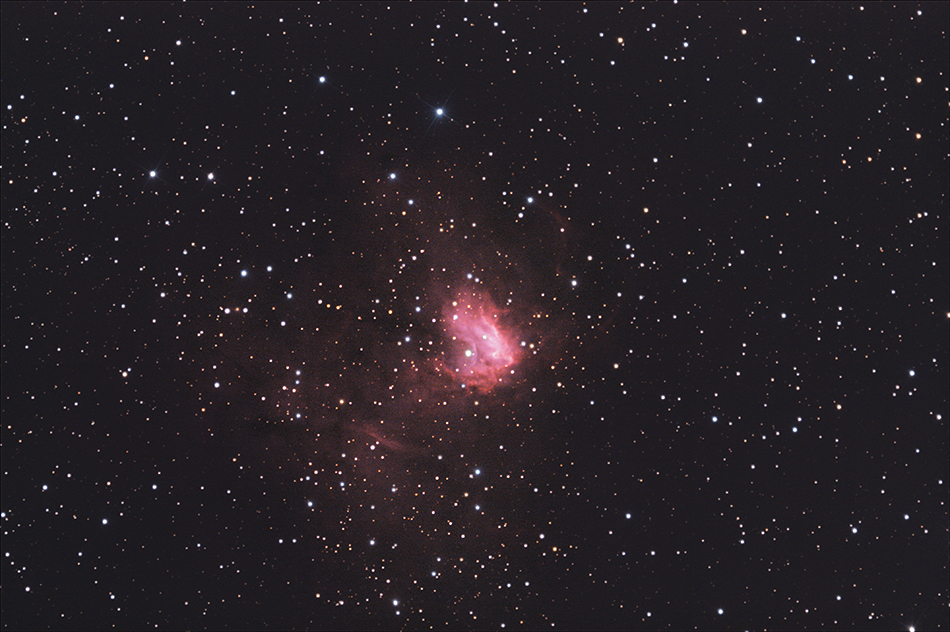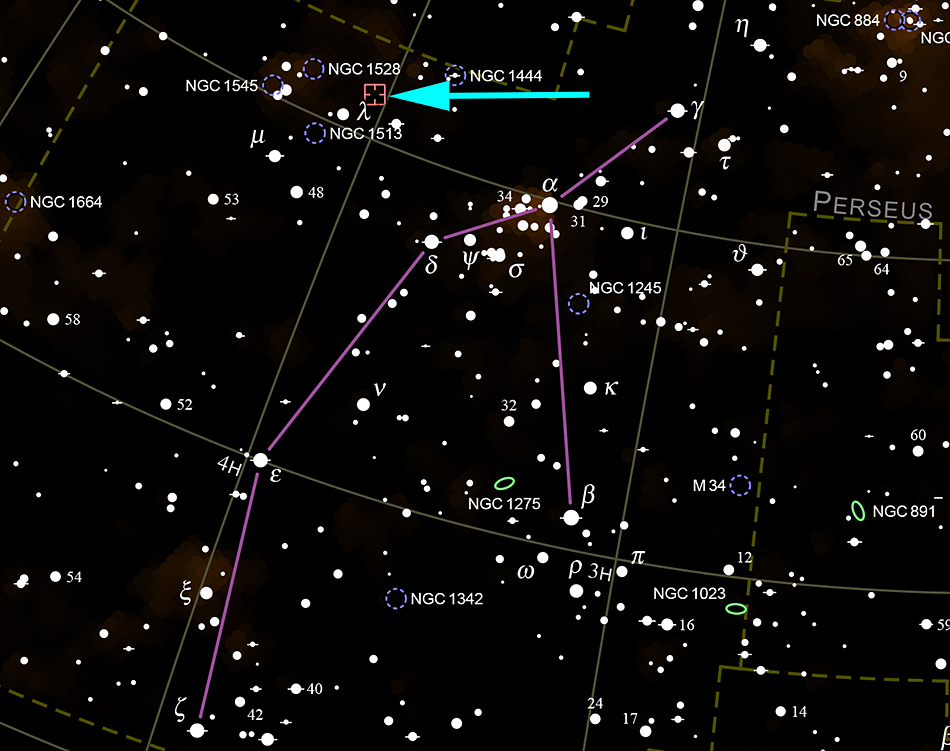

| Object name: | Constellation: | Coordinates: | Apparent size: | Visual brightness: |
|---|---|---|---|---|
| NGC 1491 | Perseus | 04h03m / +51°19' | 25' x 25' | 11.1 mag (?) |
The bright emission nebula and H II region NGC 1491 (also known as Fossil Footprint Nebula, LBN 704 or Sharpless 206) in the constellation Perseus. The ultraviolet radiation from hot stars like the blue 11.2 mag O star BD +50 886 ionizes the surrounding irregular hydrogen gas cloud, causing it to glow reddish in visible light. The bright nebula is surrounded by the fainter nebulosity LBN 705.
NGC 1491 is roughly 10,700 light-years from Earth and was discovered by William Herschel in 1790 (source: Wikipedia).
Forty-four 3-minute exposures (131 minutes total exposure) at ISO 800 taken on November 12 / 13, 2020 were added for this shot with the DeepSkyStacker software and the final image processing was done in Photoshop.
Equipment: Canon EOS 450D Baader modified camera, TeleVue Paracorr Type II coma corrector, 16" f/4.5 "Ninja" dobsonian telescope riding on a dual-axis Tom Osypowski equatorial platform, Lacerta MGEN autoguider, Lacerta off axis system (field of view comparison: image of the moon with the same equipment).
